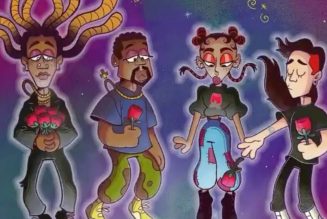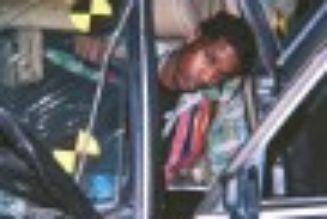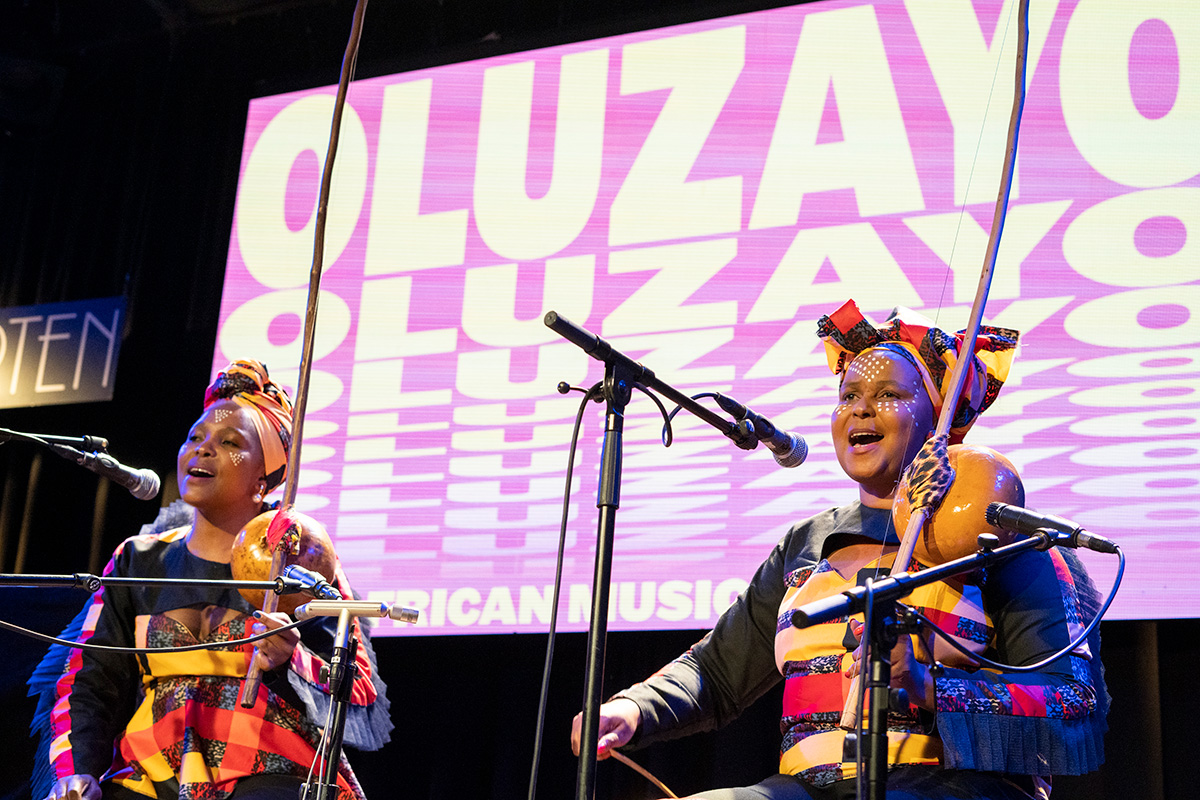
Oluzayo: African Music Futures
May 31–June 4 2023
Cologne, Germany
In the Zulu language, Oluzayo means “what lies ahead,” and this five-day festival aimed to present new African music that circumvented familiar patterns of reception and presentation. The organization behind this festival is the Cologne-based African Futures, regularly presenting a program of panels, lectures, workshops and discussions. Innovation wasn’t always compulsory, as some of the acts involved maintained deep traditional roots. Whatever might be “new” usually possessed familiar traits and elements at the core of its style.
Oluzayo’s main venue was Stadtgarten, Cologne’s chief home for jazz, electronica, pop, folkloric sounds, and all musics of adventure. The festival began and ended with a pair of concerts in theaters, highlighting premieres of moderne compositions in large ensemble and orchestral settings. The Stadtgarten middle-run was more concerned with electronic music, DJ culture, and the aforementioned traditionalists, slightly skewed and often presenting original songs.
An open call for new works was sent out, and four compositions were chosen, the premieres performed by Ensemble Modern, the renowned Frankfurtian new music interpreters. They were conducted by Vimbayi Kaziboni, with whom they have a long association. Followers of atonal abstraction might have been aghast, as all of these new pieces enjoyed a strong melodic flightiness, pushed by rhythmic forces, mostly joyful, and mostly suggesting the motions of the natural world. The Ensemble grew and shrank according to the needs of the compositions, with percussion or keyboards being added or horns expanding in range.
The Nigerian Onche Rajesh Ugbabe’s work featured prominent marimba parts and handclaps from around the Ensemble, prancing with nimble horn themes, adorned by a chiming celeste. Moods changed in a narrative manner. There wasn’t much of an African connection with the Chinese composer Yang Song, but she drew on the South African Xhosa overtone singing style umngqokolo. Song’s work opened with chiming percussion and the sound of bows moving flatly down strings, a lurching atonality appearing when flute and reeds struck up, underpinned by treading bass notes on the piano. Once again, this piece had a highly visual nature, as if depicting the drunken waddle of a large animal, teetering as it slows, refracting time, with snorting rhythms and sudden sharp percussive blows. From Ghana, Gabriel Abedi unveiled an ornate, glistening world of susurrating strings, feathery pizzicato parts matched with dainty clave clacks. Optimism prevailed, and again, this piece had a soundtrack-style narrative. Michele Sanna is Italian, and his composition called for an expanded percussion spread, including his own rebounder instrument, which looks like the largest mbira known to mankind. Its resonant metallic twang was central, but perhaps made too many punctuation points throughout the performance. The group was now actually smaller, with piano, bass, trumpet, trombone, and French horn. It’s an odd work, with an abstracted form and a near improvisatory aura. There were engine pump breath vocalizations into horns, which provided a rhythmic cycle beside piano persistence. This was the evening’s most dramatic and restless work.
The three-day Stadtgarten run moved into a different world of music. One of Oluzayo’s most entrancing performances was one of its most traditional, with the South African duo of Ancient Voices. The Xhosa singers Lungiswa Plaatjies and Nomapostile Nyiki also played a changing array of small instruments, spreading a mantle of calm sincerity over their original songs (or arrangements). First there was a harp-lyre and a stubby rain stick, as the duo sang slowly, with bare feet keeping time, painted with just the right amount of reverb. Their four feet had the sound of many. The relationship between the vocals was precisely shaped, the duo’s expressive faces helping out the moods of each song. Their colorful costumes embellished the effect, with headscarves and frilled ankles. The recurring clicks of the Xhosa language also added to the rhythms, with percussion from shaker trays that looked similar to those found on Réunion Island. Down south (Africa), most of the traditional instruments seem to have different names, as when a pair of berimbau-like single-stringers were brandished. Historically, most of these instruments have been in the province of male players. At times, Ancient Voices sung in bassier undertones, in contrast to the prevailing higher ranges. Then out came a pair of thumb pianos, set in hard frame drum trays (these instruments coming from Mozambique). A thwacking djembe made for a fittingly rousing song to close the set.
South African singer and guitarist Sibusile Xaba also works with original songs rooted in folkloric tradition. The bulk of his set seemed to be one interminable number, continually wandering within the singer-songwriter tradition, with the air of an extended song-form improvisation. He called to mind the free-form narrative creations of Lonnie Holley, although with less eccentricity. His spacious and slow balladry steadily picked up pace and intensity, as his resonant high vocal phrases accelerated. After a while, Xaba unveiled a falsetto, entering a section of Xhosa scat and contortionist guitar, his flexible lines repeating and performing rhythmic tricks.
The Ugandan multi-instrumentalist Ocen James continued the transmogrified traditional bent of this Thursday evening, in a duo with English electronic musician Rian Treanor. James’s introductory section involved a mini-demonstration of his instrumental array, which was engaging, but as it progressed, in this tight time format, it was clear that Treanor wasn’t going to be allowed much of a showing. He was visibly eager to launch his electro-blender collaboration with James. There were brief runs on a self-constructed eighteen-pronged thumb piano, with James gently singing along, then a spell of a’dunga harp playing, but Treanor was clearly waiting for him to brandish his acholi fiddle, the main instrument that they’d been working with during a joint residency in Uganda. The chief disappointment when they combined was that Treanor clearly had most of the tunes in his digital boxes, even if the acholi could be discerned as part of the weave. The vocals were mostly canned, as James sounded like he was providing a third or fourth backing vocal while dancing about the stage. Heard as a recording it sounded like a vibrant collaboration, but the live incarnation was very much orientated towards Treanor’s admittedly captivating beats. With James taking over the first part of the set, there was little actual connection between the two artists during this segmented show.
Satch Hoyt promotes his Afro-Sonic Mapping, but never really elucidates on this concept. A Londoner who’s a member of New York’s Burnt Sugar, he delivered a hucksterish introduction, showing slides of his paintings, and then engaging in a music set with electronics, tinkering at his own table of percussion instruments, and flute. So we had a vague concept, some average artworks, and an extended bout of unremarkable music, with Hoyt moving through his tabletop collection as if it was a demonstration rather than a coherent performance. The completely contrasting Ndagga Rhythm Force followed, almost brutally crafting a hard-dance form of Senegalese vocal-percussion music, an electronically augmented drumkit and unrelenting keyboard lines shaping an almost technoid incarnation. The Berlin producer Mark Ernestus attached his name to this combo, and although apparently in the house, he wasn’t visible at the sound-desk. Often this sort of combination would lead to a powerful experience, but there was a quality to the keyboard repetitions and the treble toughness of the drumming that made the set monotonous. When Ndagga just played drums for the encore, it was almost a relief.
Saturday provided a more impressive spread. Detroit’s Mark Stone was mentored by the noted Ghanaian gyil player Bernard Woma, presenting a solo set of his music on this marimba-like balafon equivalent—usually, this music would be played by a trio. The recital involved composed pieces of immense accelerated detail, but still possessing the qualities of traditional playing. Stone vocalized, and coaxed out the buzzing of the instrument’s gourds, placed under its wooden strips, as well as having shakers tied to his ankles. Stone gave his all, magnetizing the audience throughout his performance.
Victor Gama is an Angolan instrument maker, with one creation looking like a barbecue, ridged by metal semi-circles of differing sizes, another standing high to form a circular spread of harp-like strings. He was joined by Salomé Pais Matos to perform live music in front of his Tombwa film, a sort of road movie that conjures up the spirit of anthropologist Augusto Zita N’Gonguenho, its imagery calling up the mysterious circumstances of his sudden demise. The music was mesmerizing, but the narrative aspects of the film were reduced to slim captions—although this did add to the inscrutable nature of the story.
Composer and multi-instrumentalist Lukas Ligeti is one of Oluzayo’s five artistic directors, a decades-long collaborator with various African musics. He concluded the festival in the Sartory-Säle with the premiere of a suite for Burkina Electric, the local Gürzenich Orchester, and conductor Brad Lubman. This became particularly stirring during its last twenty minutes or so, with massed strings hovering like locusts, electric guitar sustaining tones, an active vocal overlap from the Burkina singer-dancers, dense and swollen, complete with prominent marimba figures. This thick brew was stirred slowly, with everything cutting sharply to a lone Nord organ, right at the back of the stage.
This festival may well be a one-off, although acting as a prelude to a Johannesburg incarnation at the end of 2023. Given the absolutely sprawling nature of the entire African diaspora, all collaborations should be encouraged, tradition shouldn’t be compulsory. We now have a kaleidoscope. Conversely, there were many performances here that somehow sieved African music through European or American gauzes. There were narratives about the music, conceptual contortions of “root” sounds, but sadly not much here that resonated with a hardcore, undiluted African spirit (if such a state is now possible). Ironically, it was the presence of ancient traditional instruments that provided the most exciting breakouts, not the presence of recent technology. Also, it must be noted that the countries of northern Africa were completely ignored.
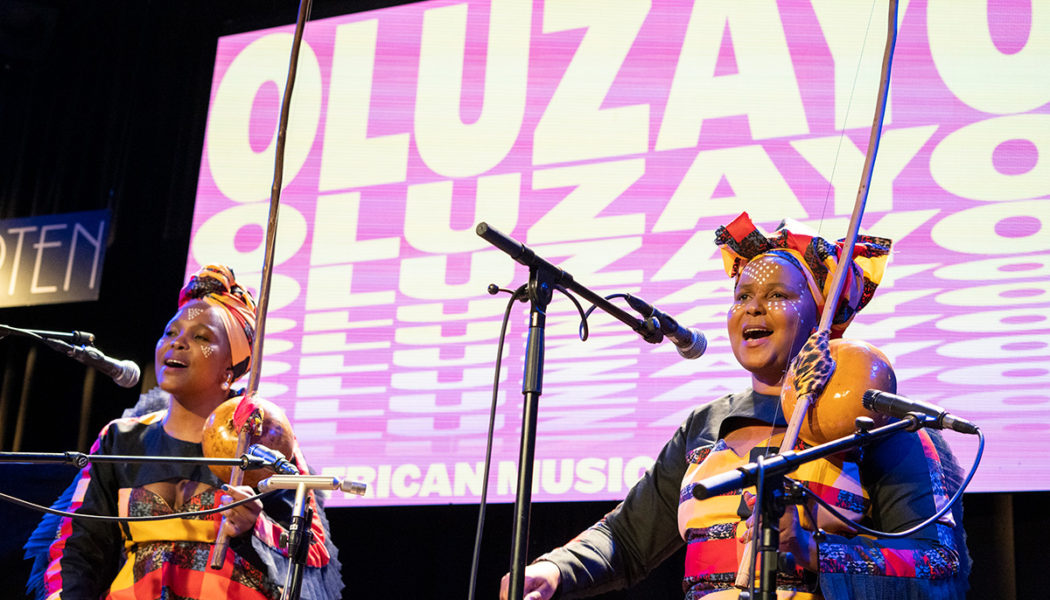
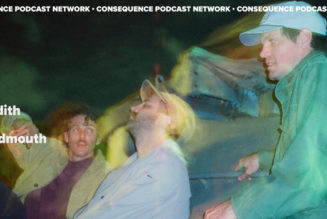
![BNXN ft Young Stunna & Nikita Kering - Traboski (Remix) [Coke Studio Africa]](https://www.wazupnaija.com/wp-content/uploads/2023/09/bnxn-ft-young-stunna-nikita-kering-traboski-remix-coke-studio-africa-12-327x219.jpg)

